

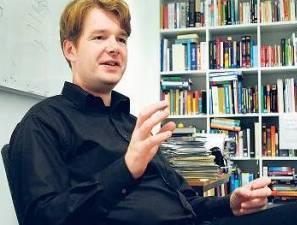 John-Dylan Haynes
John-Dylan Haynes
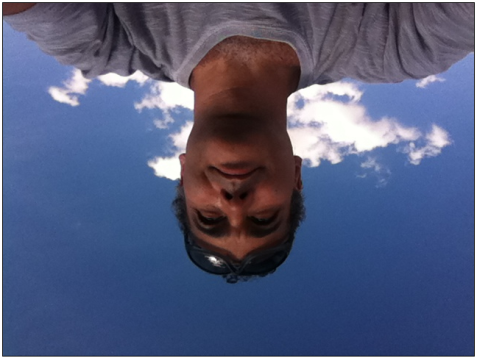 Sidarta Ribeiro
Sidarta Ribeiro
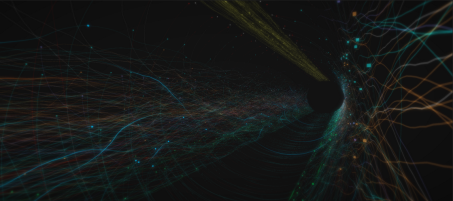 Simulated Tadpole Spinal Cord
Simulated Tadpole Spinal Cord
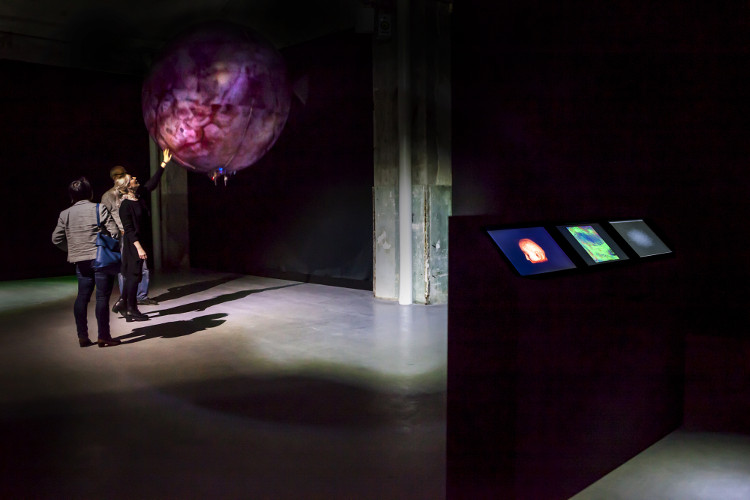 Drones with Desires
Drones with Desires
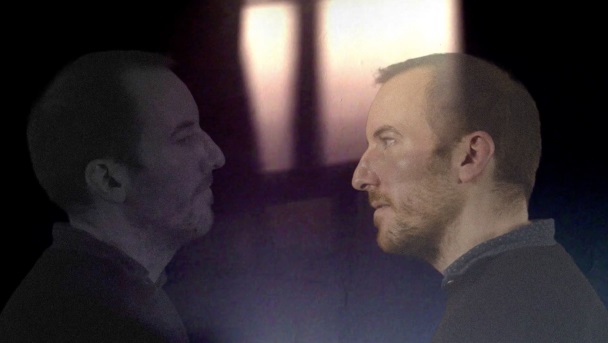 Lux Venit in Mundum
Lux Venit in Mundum
 Paul Thagard
Paul Thagard
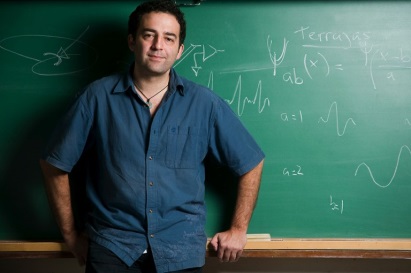 Rodrigo Quiroga
Rodrigo Quiroga
 Arthur I. Miller
Arthur I. Miller
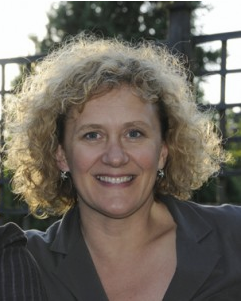 Annie Cattrell
Annie Cattrell
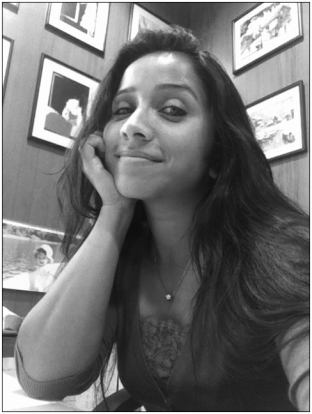 Anna Abraham
Anna Abraham
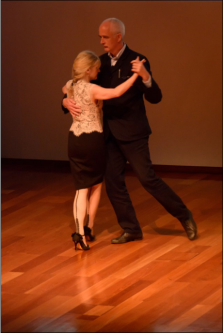 Nicola Clayton, Clive Wilkins
Nicola Clayton, Clive Wilkins
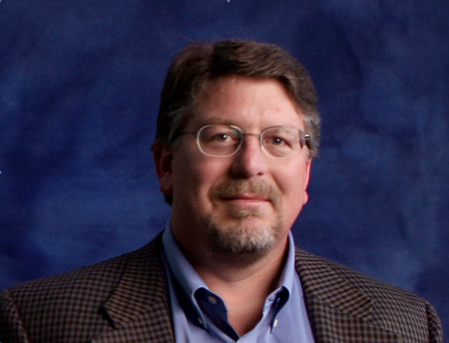 Rex Jung
Rex Jung
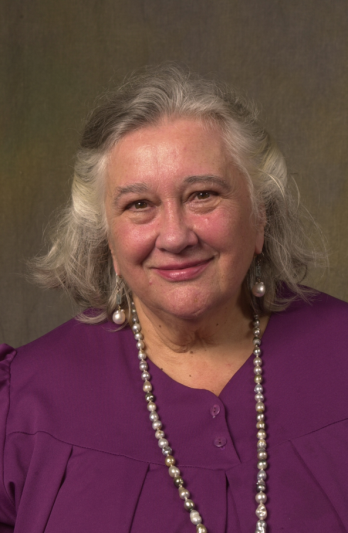 Margaret A. Boden
Margaret A. Boden
 John Kounios
John Kounios
| Time | Topic | Speakers |
|---|---|---|
| 10 AM | Introduction | |
| 10.10 AM | Neural Stem Cells and the generation of diversity in the CNS | Claudia Barros |
| 11 AM | Formation and Function of Neuronal circuits | Torsten Bossing |
| 12 PM | Schwann cells, PNS myelination and repair | David Parkinson |
| 1 PM | Lunch | |
| 2 PM | Anatomy of the Human Brain, Neurochemistry systems and Neurodegeneration | Oleg Anichtchik |
| 2.50 PM | Glia, the most important cells you’ve never heard of | Bob Fern |
| 3.30 PM | Coffee break | |
| 3.45 PM | Cell Death in the Nervous system | Shouqing Luo |
| 4.30 PM | Parkinson’s disease: Pathogenic mechanisms and potential therapeutic targets | Kim Tieu |
| 6 – 7 PM | Welcome Reception | |
| Time | Topic | Speakers |
|---|---|---|
| 10 AM | “Mind reading” with brain scanners: Facts versus science fiction | John-Dylan Haynes |
| 12 PM | Lunch | |
| 1 PM | Creativity, and Cognitive Innovation: A View from the Bridge | Susan L Denham and Michael Punt |
| Memory, sleep, dream and psychosis | Sidarta Ribeiro | |
| 3.30 PM | CogNovo Pop-Up: Demos, talks, posters | |
| Time | Topic | Speakers |
|---|---|---|
| 10 AM | Creativity in People and Computers | Paul Thagard |
| 12 PM | Lunch (Babbage Building 406) | |
| 1 PM | Concept cells and their role in memory | Rodrigo Quiroga |
| 3.30 PM | Einstein and Picasso. On the cutting-edge of creativity | Arthur Miller |
| 7.30 PM | CogNovo Dinner (by invitation), Commonwealth Suite, Holiday Inn, Plymouth | |
| Time | Topic | Speakers |
|---|---|---|
| 10 AM | From Within | Annie Cattrell |
| 12 PM | Lunch (Roland Levinsky Building 209) | |
| 1 PM | The Brain on Imagination | Anna Abraham |
| 3.30 PM | Mental Time Travel and the Moustachio Quartet | Nicola Clayton, Clive Wilkins |
| Time | Topic | Speakers |
|---|---|---|
| 10 AM | Creativity and Neuroscience | Margaret A. Boden |
| 12 PM | Lunch (Babbage Building 406) | |
| 1 PM | Interacting Brain Networks Underlying Creative Cognition | Rex Jung |
| 3 PM | Tea and Coffee | |
| 3.30 PM | The Cognitive Neuroscience of Creative Insight | John Kounios |
| 7 PM | CogJam (at the Underground, Mutley Plain) | |
Claudia Barros, 25/04/2016 10.10 AM, Link3
Neural Stem Cells (NSCs) are the progenitors of all neural cells of the central nervous system. We will discuss current knowledge on the mechanisms of NSC division modes, cell fate determination, and temporal and spatial regulation in both the embryonic and adult brain.
Torsten Bossing, 25/04/2016 11 AM, Link3
Neural network formation starts with the extensions of dendrites and axons guided by molecules towards their targets, muscles or neurons. After their formation, neural circuits use specific molecules, neurotransmitters, to control a range of behaviours from simple locomotion to complicated thought trains. Optogenetics, the use of transgenic neurons in which light pulses allow or block neuronal firing, is one tool of choice to map circuits to behaviour.
Oleg Anichtchik, 25/04/2016 2 PM, Link3
In this presentation we will explore normal anatomy of human brain, will revisit major neurotransmitter systems and will examine how alterations in these structures would cause neurodegenerative disorders, such as Parkinson's disease and Alzheimer's disease.
David Parkinson, 25/04/2016 12 PM, Link3
Schwann cells are the principal glial cells of the peripheral nervous system (PNS). The relationship between Schwann cells and the axons they support and myelinate is truly impressive and we use mouse transgenic models to study the roles of transcription factors and other signalling molecules to understand Schwann cell biology in PNS development, plasticity following injury and in the generation of PNS tumours.
Bob Fern, 25/04/2016 2.50 PM, Link3
Glial cells have been known for over 100 years as the support cells of the brain. They outnumber neurones and occupy about 50% of the brain volume. In addition to providing physical support, these cells also have major homeostatic functions: they regulate the extracellular ionic environment, provide metabolic substrate and control blood supply. More recently, a class of glial cells called astrocytes have been shown to be capable of many of the functions of neurones provoking the question, are they the supporting cast or the star attraction in the brain?
Shouqing Luo, 25/04/2016 3.45 PM, Link3
We will discuss regulatory mechanism of programmed cell death, and the regulation of cell death in the nervous system during development and pathological conditions.
Kim Tieu, 25/04/2016 4.30 PM, Link3
Parkinson’s disease (PD) is a neurodegenerative disorder. The causes of PD are multifactorial. This session will discuss the role of environmental toxins and genetic mutations linked to the pathogenesis of PD and highlight some potential therapeutic targets.
John-Dylan Haynes, 26/04/2016 10 AM, Link3
Every thought is associated with a unique pattern of brain activity. In principle, it should be possible to use these activity patterns as "brain fingerprints" for different thoughts and read out what a person is thinking based on their brain activity alone. Indeed, using powerful pattern classification techniques considerable progress has been made in such "brainreading" in recent years. It is now possible to decode which image a person is viewing, which film sequence they are watching, which emotional state they are in and which intentions they hold in mind. This talk will provide an introduction to brain reading with fMRI by showing the general principles and the state-of-the-art techniques. It will also highlight the main challenges and limitations of this new research field. Furthermore, the ethical concerns raised by technical applications of brain reading (such as neuromarketing and lie detection) be discussed.
John-Dylan Haynes is Professor for Theory and Analysis of Large Scale Brain Signals at the Charité - Universitätsmedizin Berlin and the Bernstein Center for Computational Neuroscience Berlin. Since 2009 he is Director of the Berlin Center for Advanced Neuroimaging (BCAN). His research focuses on the neural mechanisms underlying human cognition, especially on visual awareness, intentions and free will. He obtained his PhD from the University of Bremen, Germany, in 2003 with a thesis on the neural correlates of visual awareness. In 2005 he started his own research group at the Max Planck Institute for Human Cognitive and Brain Sciences in Leipzig. In 2006 he moved to his current position in Berlin. He has published over 90 international peer-reviewed papers. His research has also been covered in many media reports (including CNN, CBS, BBC, Guardian, National Geographic and Der Spiegel).
Susan L Denham and Michael Punt, 26/04/2016 1 PM, Link3
We proceed from an understanding of cognitive innovation as a fundamental strategy that has evolved in living organisms, driven by the need to flexibly adapt to the changing pressures on existence. Creativity can be viewed as a generative exaptation of this life-force, which feeds on the rewards triggered by internal recognition of generative novelty and the cultural and social linkages between individuals. As a consequence,cognitive innovation may provide a theoretical and practical platform from which to explore deep disciplinary differences in how we think about (and investigate) creativity. By juxtaposing contrasting perspectives from the sciences, arts and humanities in true transdisciplinary fashion, we hope to reveal unexpected connections that lead to stimulating discussions on the neural basis for creativity.
Sidarta Ribeiro, 26/04/2016 1 PM, Link3
Sleep has been implicated with learning and memory in humans and several animal models. The cognitive role of sleep has been postulated to stem from a non-Hebbian rescaling of synaptic weights, by which weak synapses disappear and only the strongest survive. Such "synaptic homeostasis hypothesis" proposes that sleep-dependent learning stems from selective forgetting. Alternatively, sleep has been proposed to trigger a combination of non-Hebbian rescaling and Hebbian upscaling of synaptic weights in complementary circuits (synaptic embossing theory). This talk will review evidence regarding both theories, including changes in neuronal activity, kinase phosphorylation and immediate-early gene expression related to long-term potentiation (LTP). Computational simulation of memory dynamics across the sleep-wake cycle suggests that LTP during sleep critically influences its effect on memories: Its lack determines forgetting, its presence causes memory strengthening or memory modification. The talk will also address the cognitive role of dreams, putting into perspective the early psychiatric notion of similarity between dreaming and psychosis. Recent results regarding the graph-theoretical use of dream reports for quantitative psychiatric diagnosis will be presented.
Sidarta Ribeiro has B.Sc. in biology from the University of Brasília (1993), M.Sc. in biophysics from the Federal University of Rio de Janeiro (1994), Ph.D. in animal behaviour from the Rockefeller University (2000), and post-doctoral training in neurophysiology at Duke University (2005). Professor of Neuroscience and Director of the Brain Institute at the Federal University of Rio Grande do Norte. Researches sleep, dreaming and memory; molecular mechanisms of synaptic plasticity; vocal communication in animal models; and neuroeducation. 70 peer-reviewed publications, 3 books and 9 book chapters.
Sorry, this talk had to be cancelled since UKBA did not issue a visa in time
Varga, Merrison-Hort, Livingstone, Borisyuk
We present an interactive virtual reality visualisation based on Oculus hardware. The visualisation allows users to explore the anatomy of the neuronal network in a biologically realistic model tadpole spinal cord. The visualisation also shows the results of a detailed simulation of the electrical activity in the network, demonstrating how neurons respond to skin touch by generating swimming behaviour 1.
Christos Melidis
A cybernetic approach to robot control; an intelligent interface enabling the remote control of arbitrarily complex robotic morphologies by translating intuitive human behaviours to purposeful robotic actions.
Agi Haines, Jack McKay Fletcher, Christos Melidis, Jos van der Geest, Marcel de Jeu, Sean Clarke, Vaibhav Tyagi, Marcel Helmer
A concept for a drone that contains an artificial neural network to help audiences gain an understanding of brain plasticity and our relationship to artificial intelligence.
Joana Galvao, Guy Edmonds, David Bridges
Taking the story of Plato’s Cave - the foundational ‘myth’ of cinema - as its starting point, this film explores the subjectivity of truth, belief and reality, while addressing the inner turmoil experienced when these truths are challenged. With beguiling images of flickering evanescence, we seek to inspire a breakthrough, to challenge our own truths and broaden our minds to consider the unthinkable.
Paul Thagard, 27/04/2016 10 AM, Link3
An idea is creative if it is new, valuable, and surprising. This talk will describe neural mechanisms for human creativity, including multimodal representations, binding of representations into new ones, and competition among them to become conscious. All of these mechanisms have been computationally modeled in Chris Eliasmith’s Semantic Pointer Architecture. They suffice for explaining many kinds of creativity in science, technology, art, and social innovation. These mechanisms contrast with current computational models of creativity such as Chef Watson, but suggest how computers might become more creative. A major gap in current computational understanding of creativity concerns procedural knowledge, the development of new methods. These can be understood as multimodal rules that are encoded by semantic pointers.
Paul Thagard is Professor of Philosophy at the University of Waterloo, Canada. He is a Fellow of the Royal Society of Canada, the Cognitive Science Society, and the Association for Psychological Science. His most recent books are The Brain and the Meaning of Life (Princeton University Press, 2010) and The Cognitive Science of Science (MIT Press, 2012).
Rodrigo Quiroga, 27/04/2016 1 PM, Link3
Intracranial recordings in patients suffering from intractable epilepsy allow studying the firing of multiple single neurons in awake and behaving human subjects. These studies have shown that neurons in the human medial temporal lobe represent concepts, responding in a remarkably selective, invariant and explicit manner to particular persons or objects, such as Jennifer Aniston, Luke Skywalker or the Sydney Opera House. I will show the main characteristic of these neurons and argue that they are the building blocks for declarative memory functions. At the end of the talk I will open for discussion speculative statements about a potential role of these neurons in creativity.
Rodrigo Quian Quiroga holds a Research Chair at the University of Leicester, UK. He is the director of the Centre for Systems Neuroscience and the Head of Bioengineering at the University of Leicester. His main research interest is on the study of the principles of visual perception and memory. He discovered what has been named "Concept cells" or "Jennifer Aniston neurons"—neurons in the human brain that play a key role in memory formation— a finding that was selected as one of the top 100 scientific stories of 2005 by Discover Magazine.
Arthur Miller, 27/04/2016 3.30 PM, Link3
Almost simultaneously, in the first decade of the 20th century Albert Einstein discovered relativity and Pablo Picasso cubism. How - and why? This fascinating story involves their often turbulent personal lives; the high drama of their struggles to achieve new ideas in the face of opposition from contemporaries; and the unlikely sources for their creative leaps, ignored by everyone else. Thus it was that Einstein's discovery of relativity owed a great deal to his involvement in assessing designs for electrical dynamos and the coordination of train schedules, while Picasso's creation of Cubism was influenced by photography, cinema and the frontier science of his day. Their common denominator was the great French polymath Henri Poincaré. Both men were swept up by the avant-garde, the intellectual tidal wave whose principal problem was the nature of space and time. Their minimalist approach was shared by the musician Erik Satie who, along with Picasso, lived in Paris of La Belle Époque. To fully understand what happened involves coming to grips with wide-ranging questions such as: Are there similarities in creativity between artists and scientists? What do artists and scientists mean by 'aesthetics' and 'beauty'? Can we unravel creativity at its highest level?
Arthur Miller is fascinated by the nature of creative thinking - in art on the one hand and science on the other. What are the similarities, what are the differences? He has published many critically acclaimed books, including Insights of Genius: Imagery and Creativity in Science and Art; Einstein, Picasso: Space, Time and the Beauty that Causes Havoc (nominated for a Pulitzer Prize); Empire of the Stars: Chandra, Eddington and the Quest for Black Holes (shortlisted for the Aventis Prize) and 137: Jung, Pauli, and the Pursuit of a Scientific Obsession. He writes for the Guardian and The New York Times. He regularly broadcasts and lectures, and curates exhibitions on art/science. He writes engagingly about complex social and intellectual dramas, weaving the personal with the scientific to produce thoroughly-researched works that read like novels. He is professor emeritus of history and philosophy of science at University College London.
His recent book Colliding Worlds: How Cutting-Edge Science is Redefining Contemporary Art (W.W. Norton) tells the story of how art, science and technology are fusing in the twenty-first century. To research it he interviewed leading figures in the world of contemporary science-influenced art and has spent time and lectured at CERN, the MIT Media Lab, Le Laboratoire, the School of Visual Arts, ZKM, and Ars Electronica. In 2013 he was a juror for the Prix Ars Electronica for Hybrid Art. See www.arthurimiller.com and www.collidingworlds.org
Annie Cattrell, 28/04/2016 10 AM, Link3
Annie Cattrell has worked regularly in collaboration with scientists and in scientific institutions. As Professor Martin Kemp wrote, in a text for her solo exhibition From Within at the Royal Institution of Great Britain: ‘Cattrell has a sustained exploration of how abstract visualisations in science can be brought into tangible and sensual existence’. In her talk Cattrell will show how she has worked with scientists and in scientific institutions and how this has informed her practice as a visual artist. She would then like to explore how scientists and artists use diagrams, models and drawing to reveal the invisible and unknown. If participants could bring along and share an example of how they use these visual devices in their work this would be most welcome!
Cattrell is a visual artist who lives and works in London. She received awards including an Arts and Humanities Research Board Research Fellowship in Art, Science and Technology based at De Montfort University where she is now Reader in Fine Art and Research Group Leader in Fine Art and Photography. One of her main collaborations, with scientists, has included working with neuroscientist Professor Morton Kringlebach from Aarhus University and Oxford University. The collaboration has resulted in the making of a number of sculptures, including a series based on how the brain experiences both pleasure and pain. This work has been shown recently in an exhibition called Objects on the Edge at the Humboldt University in Berlin. Over the last ten years Cattrell has also produced large scale commissioned site specific works such as 0 to 10,000,000 for the Biochemistry Department at Oxford University, Resounding for Oxford Brookes University and currently she is lead artist for the Cambridge University New Museum Site re-development where she is in the process of making a sculpture for the Old Cavendish Laboratory.
Anna Abraham, 28/04/2016 1 PM, Link3
Processes of imagination are central to human mental life, but they are rarely accorded that position in academic discourse or empirical study within psychological and neuroscientific realms. In this talk, an attempt will be made to bring together the multitudinous facets of imagination within a common framework. I will make the case that the processes of imagination can be classified as falling into one of five categories, which are defined on the basis of theoretical ideas from philosophy as well as empirical evidence from neuroscience. This novel quinquepartite classification should serve to systematize and help advance our understanding of the workings and brain basis of the human imagination.
Anna Abraham is currently a Reader in Psychology at Leeds Beckett University (UK) within the School of Social Sciences, where she also is the Director of CeASR (Centre for Applied Social Research). She received her educational and professional training within the disciplines of psychology and neuroscience in several academic institutions and a range of different departments across the world. Her research expertise is in the field of creativity and other aspects of imagination from cognitive, neuroscientific and clinical perspectives. More information about her can be obtained from her website: www.anna-abraham.com.
Nicola Clayton, Clive Wilkins, 28/04/2016 3.30 PM, Link3
Mental time travel allows us to re-visit our memories and imagine future scenarios~ that’s why memories are not only about the past, they are also prospective. Our memories are not a fixed store of what happened; they are reassessed each time they are revisited and depend on the sequence in which events unfold. Nicky and Clive, a scientist and artist respectively, explore the complex relationships between memory and human experience, including through a series of novels ‘The Moustachio Quartet’ that can be read in any order. Join them for a fascinating talk incorporating science, literature, and the performing arts.
Nicky Clayton is Professor of Comparative Cognition in the Department of Psychology at the University of Cambridge. Nicky is psychologist, ornithologist and dancer. She has written numerous publications on cognition in crows and children. She was elected a Fellow of the Royal Society in 2010 and she is Scientist-in-Residence at Rambert (formerly Ballet Rambert).
Clive Wilkins is Artist-in-Residence in the Department of Psychology at the University of Cambridge. Clive is a writer, fine art painter, and dancer. His paintings have been frequently seen in London Mayfair art galleries. His current newly published novel ‘The Moustachio Quartet’ appeared at the UK’s leading literary festival at Hay on Wye last year.
Nicky and Clive met on a dance floor… They are co-founders of The Captured Thought, which is an arts and science collaboration that explores mental time travel and the subjective experience of thinking (https://claytonwilkins.wordpress.com).
Margaret A. Boden, 29/04/2016 10 AM, Link3
Creativity is the ability to come up with ideas that are new, surprising, and valuable. It doesn’t happen by magic. Somehow, it’s generated by the brain—like all psychological phenomena. However, that doesn’t mean that it’s an easy target for neuroscience.
There are three kinds of creativity: combinational, exploratory, and transformational. Neuroscience has already begun to throw some light on how combinational creativity is possible. And we can expect it to add more in future. But exploratory and transformational creativity are more challenging. Current neuroscience not only doesn’t ask the relevant questions, but is in no position to ask—or answer—them. That’s because it has no grasp of how hierarchical styles of thinking can be represented, explored, or manipulated. In addition, neuroscience (like any other science) cannot judge that a particular idea is valuable. In that sense—but only in that sense—creativity lies outside the reach of science.
Margaret A. Boden OBE ScD FBA is Research Professor of Cognitive Science at the University of Sussex, where she helped develop the world's first academic programme in cognitive science. She holds degrees in medical sciences, philosophy, and psychology, and integrates these disciplines with AI in her research. She is a Fellow of the British Academy, and of the Association for the Advancement of Artificial Intelligence (and its British and European equivalents). Her work has been translated into twenty languages. Her books include The Creative Mind: Myths and Mechanisms(1990/2004) and Mind as Machine: A History of Cognitive Science (2006). (AI, Its Nature and Future is in press.)
She has two children and four grandchildren, and lives in Brighton.
Rex Jung, 29/04/2016 1 PM, Link3
Creativity research has matured in the last number of years to include aspects of brain structural and functional correlates of this complex cognitive construct. Current challenges center around how to integrate these disparate findings within the confines of the human brain. This talk endeavors to tie together some of these theoretical perspectives from a brain-behavior point of view. Our recent review of the structural neuroimaging literature (Jung et al., 2013) as well as our recent opinion article (Jung RE, 2014) have provided a model which pulls together many of the loose threads that characterize creativity neurosciences. First, it is hypothesized that evolutionary pressures selected for both common (i.e., deductive) and less common (i.e., inductive/abductive) reasoning processes, the former of which corresponds to intellectual (i.e., convergent) problem solving, and the latter to divergent problem solving. Second, there appears to be a rather consistent inverse correlation between measures of creative cognition and those of neuronal fidelity, suggesting either increased neuronal efficiency (Jung et al., 2010) and/or disinhibition of cognitive control mechanisms (Jung et al., 2013). Third, that structural brain measures associated with creative cognition, including lesion studies, measures of cortical thickness, white matter fidelity, and brain biochemistry, overlap significantly with the Default Mode Network. Taken together, we hypothesize that three networks underlie the expression of creative cognition: the Default Mode Network (DMN) for “blind variation,” (aka inductive/abductive reasoning) the Cognitive Control Network (CCN) for “selective retention,” (aka deductive reasoning) and the Salience Network (SN) for modulation of information flow between the two.
Rex Jung received his training in clinical psychology, specializing in neuropsychology, at the University of New Mexico, in Albuquerque. He completed an internship at Baylor College of Medicine in the Departments of Neurosurgery and Behavioral Medicine, and postdoctoral training at the University of New Mexico in Psychiatry Research. He has been on the Neurosurgery faculty at the University of New Mexico since 2008, where he splits his time between neuroimaging research and holding neuropsychology clinics with neurosurgical patients. He studies both brain disease and what the brain does well—a field of research known as “positive neuroscience. His research is designed to relate behavioral measures, including intelligence, personality, and creativity, to brain function and structure in healthy, neurological, and psychiatric subjects. He has published research articles across a wide range of disciplines, including traumatic brain injury, lupus, schizophrenia, intelligence, creativity, and genius. His research has been funded by the National Institutes of Health, the National Endowment for the Arts, DARPA, and the John Templeton Foundation. He is on the Editorial Boards of Intelligence, PLoS ONE, and Frontiers. He will be editing a forthcoming book with Cambridge University Press (with Oshin Vartanian) entitled “Handbook of the Neuroscience of Creativity.”
John Kounios (remote talk), 29/04/2016 3.30 PM, Link3
Insight, colloquially known as the “Aha” or eureka moment, is the sudden reorganization of a knowledge representation resulting in a new understanding of an object, concept, situation, or event. Though insight has been a focus of research in experimental psychology for about a century, little progress was made in understanding it after the early pioneering studies of the Gestalt psychologists. However, the advent of cognitive neuroscience – neuroimaging in particular – has reinvigorated the study of insight and elucidated the newly emerging cognitive neuroscience of creativity. This talk will focus on neural activity at the moment of insight and during preceding states, including resting-state brain correlates of the tendency toward an insightful or analytic cognitive style.
John Kounios, PhD, is a professor of psychology and director of Drexel University’s doctoral program in Applied Cognitive and Brain Sciences. He has published cognitive neuroscience research on insight, creativity, problem solving, memory, and Alzheimer’s disease. His research has been funded by the National Institutes of Health and the National Science Foundation. He is a Fellow of the Association for Psychological Science and the Psychonomic Society and serves on a National Science Foundation advisory panel. He is coauthor (with Mark Beeman) of The Eureka Factor: Aha Moments, Creative Insight, and the Brain (Random House, 2015).
An evening of live music performances and film clips, also featuring ‘Drones with Desires’, (Agi Haines, winner of Bio Art + Design Award 2015 Den Haag, Netherlands; Agi’s 2m floating sculpture is controlled by an neural network based on her MRI brain data with help from Jack, Christos, Michael, and Vaibhav).
19.30 – 20.00: Pinar DJ
20.00 – 20.10: Diego
20.10 – 20.30: Tara Zacksaite
20.30 – 20.40: Pinar DJ
20.40 – 21.00: Jack McKay Fletcher
21.15 – 21.30: The Drone Dorris Dancers (will be using NSWAC set-up for sound)
21.30 – 22.00: NSWAC
22.10 – 22.45: Films (Guy – projecting Captain Zig, with his projector, followed by 2 films projected from a laptop)
22.45 onward: Dj Pinar.